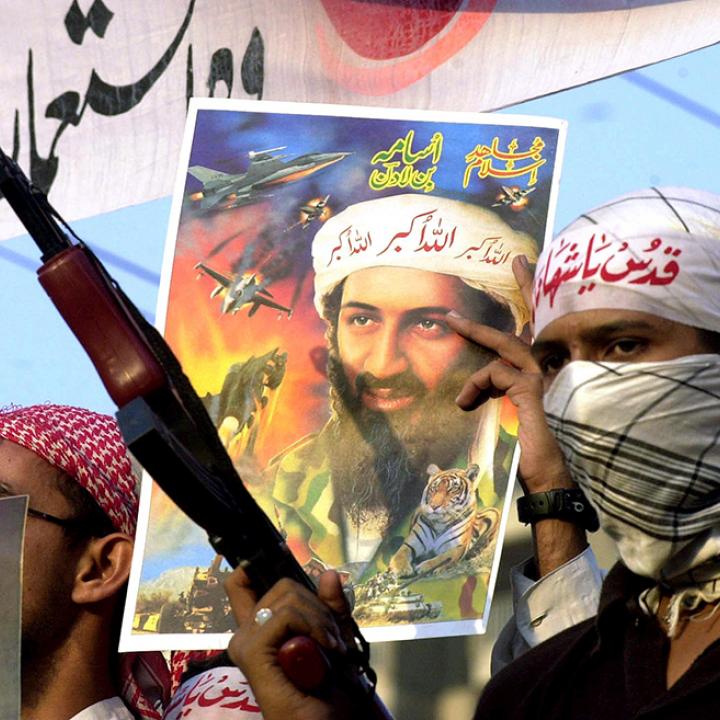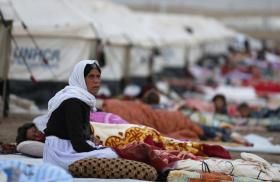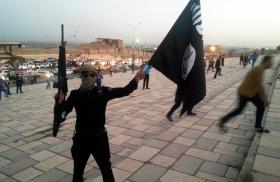

Part of a series: Counterterrorism Lecture Series
or see Part 1: U.S. Efforts against Terrorism Financing: A View from the Private Sector
How should Washington assess the strategic threat of al-Qaeda's central command structure versus its regional satellites and aligned or sympathetic groups?
On September 4, 2012, Bruce Hoffman, Mary Habeck, Aaron Y. Zelin, and Matthew Levitt addressed a Policy Forum at The Washington Institute. Dr. Hoffman is director of the Center for Security Studies at Georgetown University's Walsh School of Foreign Service. Dr. Habeck is an associate professor of strategic studies at the Nitze School of Advanced International Studies at Johns Hopkins University. Mr. Zelin is the Richard Borow fellow at The Washington Institute, focusing on jihadist groups. Dr. Levitt is director of the Institute's Stein Program on Counterterrorism and Intelligence. The following is a rapporteur's summary of their remarks.
BRUCE HOFFMAN
Over the past decade, many of the assumptions made about al-Qaeda have been misleading or entirely wrong. Even prior to Usama bin Laden's death, observers were eager to label al-Qaeda an ideology, not an organization. In their view, al-Qaeda affiliates had always sustained a segmented alliance, and bin Laden no longer held a significant, active role within the movement because he could not communicate effectively with his constituents while he was in hiding. In reality, however, it is far too soon to declare victory over "al-Qaeda Central" -- even in the wake of bin Laden's passing, the U.S. government should be cautious with regard to conventional wisdom on the group.
Currently, al-Qaeda continues to maintain extensive operational environments and safe havens in Pakistan, Somalia, and Yemen. Additionally, its presence in Syria has become commonplace and will be pivotal in the organization's future. Al-Qaeda has long been fixated on Syria, viewing it as the dividing line between the "Zionist regime" and the Islamic world. As a result, the group has adeptly filled the vacuum created by the Syrian civil war and the wider Arab uprisings, especially in the absence of the United States and the UN.
Internally, al-Qaeda's core has long been made up of disenfranchised and marginalized youths. This constituency remains a prime target for the group's messaging -- a trend that will likely accelerate in the future as regional youths grow increasingly impatient and find themselves deprived of political and economic benefits.
At the same time, bin Laden's death and the weakening of al-Qaeda Central have spurred fragmentation of the jihadist movement and opened a new range of threats to the area. Smaller, more dispersed entities are likely to form and will prove more difficult to track and identify, since they will leave less of a footprint and modus operandi.
Al-Qaeda's force-multiplying opportunism is embedded in its mentality, and the group constantly monitors U.S. defenses in an effort to identify new gaps and opportunities that can be exploited. As such, Washington should prepare for al-Qaeda to advance a new strategy -- namely, by formulating a clear U.S. policy to address the ongoing threat. Although the drone-strike program has been a setback for some of al-Qaeda's leadership, it remains a tactic, not a strategy. Only by breaking the cycle of radicalization and recruitment that sustains the movement can the United States defeat al-Qaeda Central in the near and long term.
MARY HABECK
Discussions of al-Qaeda Central's continued relevancy tend to rest on two assumptions: that the group is relevant only when attacking U.S. targets and interests, and that its primary objective is to carry out such attacks. Neither assumption is supported by the group's statements or actions. Rather, al-Qaeda's battle is against the rest of the Muslim world, which does not share its beliefs or agenda -- attacks on U.S. interests are simply a means to achieve the group's main objective of establishing itself as a worldwide Islamic extremist society. Al-Qaeda sees America's influence and presence in Saudi Arabia, Egypt, Turkey, and the rest of the Muslim world as a threat to its prominence and the primary cause of its failure to achieve its aspirations.
Recently released documents from bin Laden's Abbottabad compound make clear that attacking the United States was only the first step in al-Qaeda's strategic plan, which aims to exhaust America and force it to withdraw from all Muslim countries. The next stage in the plan is to take over these countries in order to establish emirates capable of expanding without U.S. intervention. Thus, al-Qaeda is relevant not only when it attacks the United States, but also when it threatens to usurp local governments in a manner that furthers its long-term global ambitions.
In addition, the notion that al-Qaeda Central and its affiliates can be separated from one another is an illusion that negatively affects U.S. strategy and policy opinion. Over the past two years, without attacking the United States, al-Qaeda Central has declared affiliates and emirates from West and North Africa to the Middle East and imposed its version of sharia in various Muslim-majority countries. Yet because these actions have not directly affected American lives, they have failed to command much attention in the United States. Going forward, Washington should place more emphasis on al-Qaeda Central's relevance in the Muslim world, where its influence continues to spread unbeknownst to many U.S. authorities.
AARON Y. ZELIN
In the years following the September 11 attacks, jihadist cells defeated on the ground often regenerated themselves as forces of radicalization over the internet. In the United States, jihadist activism has decreased somewhat in recent years, largely due to the ongoing Arab uprisings and al-Qaeda's focus on countries where it is most likely to find an audience (e.g., Syria and Yemen). The situation in Syria has especially invigorated al-Qaeda Central's efforts to establish preeminence in the region.
In general, the use of online jihadist forums is an important authentication tool for al-Qaeda -- the group can cite these forums as a legitimate means of spreading its ideology via the internet, as opposed to more high-profile, risky outlets such as Facebook and Twitter. The overall architecture of the forums serves as an essential safe haven for al-Qaeda Central. Grassroots supporters and recruits are still influenced by these online venues, as are youths in the West. This is especially true in "lone wolf" plots such as the Muhammad Merah shootings in France this past March.
Nevertheless, shutting down al-Qaeda's online apparatuses can have its disadvantages. For one thing, eliminating a leading forum would simply lead a second-tier forum to take its place, accomplishing nothing. More important, online jihadist activity can be instrumental in helping intelligence services discern the various networks embedded within al-Qaeda.
MATTHEW LEVITT
Leadership losses, sustained international pressure, targeted sanctions, and the Arab uprisings have all marked a significant setback for al-Qaeda and its already shaky financial stability. The group's senior leadership has consistently been greater than the sum of its parts, with bin Laden in particular representing both charismatic leadership and considerable financial networking. Although al-Qaeda's core remains relevant after his death, much of the immediate terrorist threat has now shifted toward independent regional affiliates.
Traditionally, al-Qaeda Central has rejected money from "impure" sources such as drug trafficking and other illegal activities, forcing it to pursue "creative" partnerships with the likes of Iran and Lashkar-e-Taiba. Kuwait and Qatar remain key sources for raising funds, which are then transferred to al-Qaeda Central through Iran; last year, the International Monetary Fund identified Kuwait as the only Persian Gulf country not to criminalize terrorism financing. In July 2011, the Treasury Department exposed Tehran's continued support by targeting six members of an Iran-based al-Qaeda financial network. Specifically, the group's main financial pipeline spans from Kuwait to Pakistan, crossing through the Islamic Republic and requiring that the Iranian government allow al-Qaeda to operate within its borders.
Even so, officials are now more concerned about al-Qaeda Central's messaging than its funding. The financial restraints on previous global jihadist recruits do not apply to homegrown violent extremists. To be sure, the loss of bin Laden was a blow to al-Qaeda's vast network of Gulf fundraisers and their ability to authentically represent the movement. Yet al-Qaeda Central remains relevant in its messaging, in its goal to incubate local campaigns into a global jihad, and in the fact that individual terrorist attacks are relatively inexpensive to carry out, lessening the significance of the group's overall financial struggles.
This rapporteur's summary was prepared by Guive Rosen.








